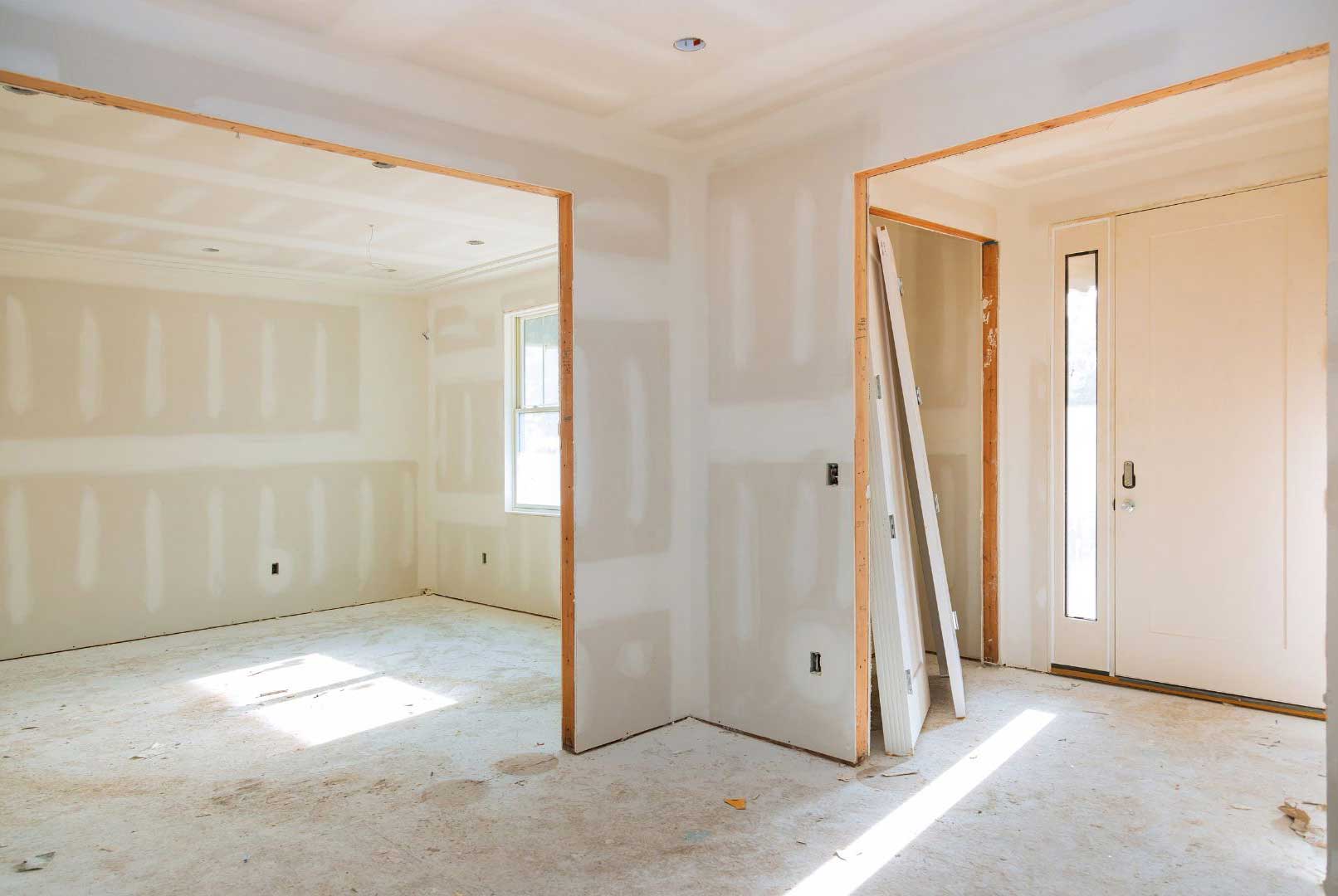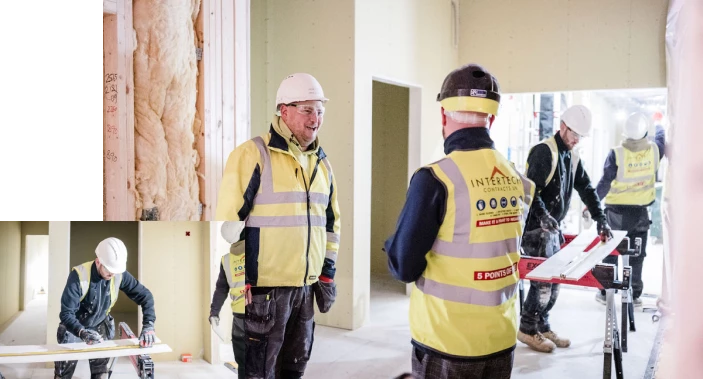
Get the base right before the finish
Tape and jointing is an essential step in the drywall installation process, and getting it right can make all the difference to the overall finish of your project. In addition, ensuring you have employed the right contractor with the right tools is essential to ensure that the end result looks great and lasts a long time.
The tape and jointing technique involves covering the joints between drywall panels with a layer of joint compound and then embedding paper or mesh tape into the compound. This creates a seamless finish between the panels and strengthens the joints, preventing cracks from forming over time.
While tape and jointing may seem like a simple task, it must be done correctly to achieve a professional and durable finish. If not finished correctly, it can lead to noticeable seams, cracks, and other imperfections that can affect the overall appearance of a space. In addition to the final look, proper tape and jointing is also crucial for the drywall's structural integrity, as it helps prevent the joints from separating over time.
Choosing the right tools for tape and jointing
Selecting the correct type of tape is the first step in proper tape and jointing. There are two main types of tape used in drywall jointing: paper tape and mesh tape. Paper tape is made of a thin layer of paper and is recommended for use in interior walls and ceilings where there is little movement or stress. Mesh tape, on the other hand, is made of a flexible mesh material and is ideal for use in areas with potential for movement or stress, such as outside corners and around windows and doors. Other types of tape include Fibatape and self-adhesive tape. It is essential to recognise which method is suitable for your job.
Once you have chosen the correct type of tape, it is vital to apply it correctly. For example, when using paper tape, the joint compound should be applied to the joint first, and then the paper tape should be carefully placed on top of the compound, smoothing it out to remove any air bubbles. When using mesh tape, however, the tape should be placed over the joint, and the compound should be applied over the tape, filling in any gaps and smoothing out any wrinkles.
Applying the joint compound evenly and to the correct thickness is also essential. If the compound is too thin, it will not provide adequate coverage, leading to visible seams and imperfections. On the other hand, if the mixture is too thick, it will take longer to dry and may crack or shrink as it dries. The ideal thickness for the joint compound is about 1/8 inch.
After the tape and compound have been applied, the compound must dry completely. This can take anywhere from several hours to several days, depending on the conditions in your work area. Once the mixture has dried, it should be sanded smooth to remove any rough spots or bumps.
Another critical factor in proper tape and jointing is the number of coats required. Three coats of joint compound are typically needed to achieve a professional finish. The first coat should be applied over the tape and should be slightly thicker than the subsequent coats. The second and third coats should be applied once the first coat has dried and should be sanded smooth between each coat. The final coat should be applied as thinly as possible to achieve a smooth and seamless finish.
In addition to selecting the correct type of tape and applying the joint compound correctly, it is also important to choose the right tools for the job. A high-quality taping knife, sandpaper, and a sanding block are essential for a professional finish. Your contractor should have all the appropriate tools to ensure your job is finished to the highest standard.
Proper Tape and Jointing for longevity
Proper tape and jointing is also important for your drywall installation's overall longevity and durability. If the joints are not adequately taped and jointed, they can become weak over time and may eventually crack, leading to damage and costly repairs. Furthermore, if tape and jointing is not completed correctly it can also lead to moisture damage, as water can seep into the joints and cause the drywall to rot or mould.
To avoid these problems, using high-quality materials and following proper techniques when tape and jointing your drywall is important. In addition, hiring a professional contractor with experience in drywall installation can ensure that the job is done correctly and that the final result will be a professional and durable finish.
In conclusion, proper tape and jointing is essential for achieving a professional and durable finish in any drywall installation. Every step of the process must be done correctly to ensure a seamless and long-lasting finish, from selecting the right type of tape to using the right tools. Tape and jointing is a crucial step in the drywall installation process that should not be overlooked. With the right knowledge, tools, and materials, anyone can achieve a professional and lasting finish in their drywall project.
At Intertech Contracts, we have a trained team of professionals to finish your project to an excellent standard. So get in touch today to get your project started.

